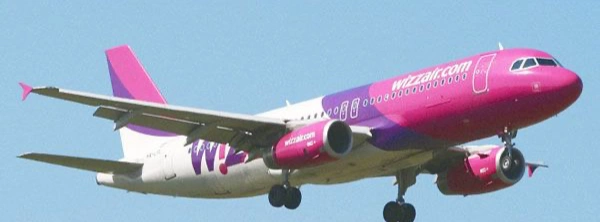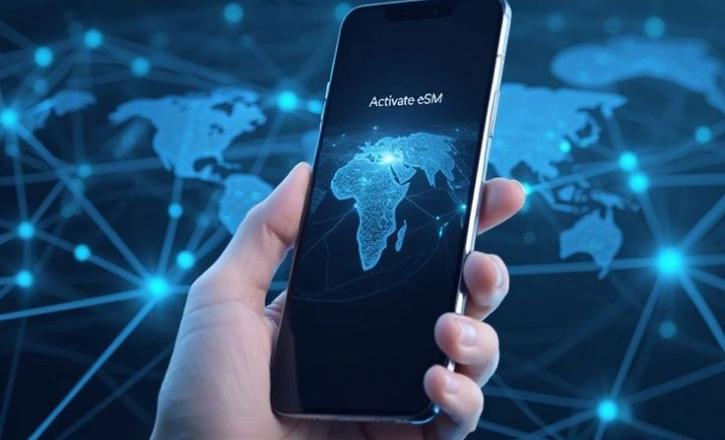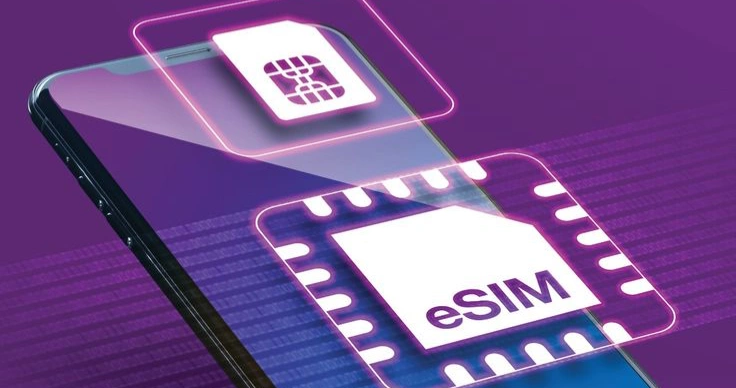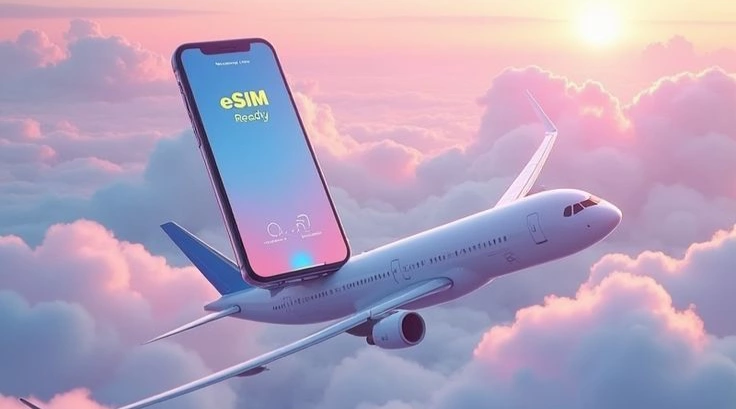Travel Destinations Posts on Crowch
Every year on October 4th, taco lovers across the United States — and increasingly, around the world — come together to honor one of the most iconic dishes ever created: the taco. While people enjoy tacos year-round, National Taco Day is a chance to celebrate not just the food itself, but also its history, diversity, and the sense of community it brings.
A Journey Through History
The story of the taco begins in Mexico, where it has been a staple for centuries. Historians believe the word “taco” may have originated from the Spanish term for “plug” or “wad,” a nod to the way food was wrapped inside tortillas. In the 18th century, Mexican miners reportedly used the term to describe small, folded tortillas filled with food, much like paper-wrapped gunpowder charges used in the mines.
Originally a working-class street food, tacos became a beloved part of Mexican daily life, sold at markets and by street vendors. When Mexican immigrants brought tacos to the United States in the early 20th century, they quickly gained popularity — first in border towns, and later across the entire country. Today, tacos are enjoyed globally, with endless regional and creative variations.
The Many Faces of a Taco

One of the reasons tacos have such universal appeal is their versatility. The tortilla — whether corn or flour — is a blank canvas for an almost infinite range of fillings. Traditional favorites include carne asada, carnitas, al pastor, and grilled fish. For vegetarians and vegans, there are countless plant-based fillings, from seasoned beans and roasted vegetables to jackfruit or tofu.
Toppings are equally varied — fresh cilantro, chopped onions, creamy guacamole, tangy salsa, pickled vegetables, shredded cheese, and a squeeze of lime all add to the explosion of flavors. Every taco is a unique balance of textures: soft tortilla, tender filling, and crisp garnishes.
How People Celebrate National Taco Day

National Taco Day has grown into a fun, flavorful holiday for all ages. Restaurants and food trucks often create special menus, offering discounts or limited-edition tacos with unique flavor combinations. Social media becomes flooded with taco photos, recipe videos, and polls about the “best taco ever.”
Many people celebrate at home, hosting taco nights with friends and family. These gatherings are an opportunity to experiment with new recipes, try different tortillas, or set up a “taco bar” where guests can build their own creations. Some communities even organize taco festivals, complete with music, cultural performances, and contests for the most creative taco.
A Cultural Symbol
Beyond its taste, the taco represents cultural heritage, creativity, and togetherness. It’s a dish that tells a story — of tradition, adaptation, and the blending of flavors across generations. Its ability to be customized for different diets and tastes makes it a meal that truly welcomes everyone to the table.
Whether you love your tacos spicy or mild, soft or crunchy, filled with meat, seafood, or vegetables, National Taco Dayis a perfect excuse to enjoy this timeless favorite. And perhaps, as you take that first bite, you’ll be reminded that food isn’t just about eating — it’s about sharing, connecting, and celebrating life.
From May 13 to 24, 2025, the French Riviera will once again become the world capital of cinema. The Cannes Film Festival, one of the most respected and influential in the world, will bring together directors, actors, producers, critics, and thousands of cinema lovers from across the globe. For over 75 years, it has shaped the direction of global filmmaking, and its awards remain among the most prestigious in the industry.
Why Cannes Still Leads the Way
The festival was founded in 1946 as an independent space for cinema, free from political influence. Since then, it has become an international platform where mainstream, arthouse, and debut films from the most unexpected places intersect.
The festival's top prize, the Palme d’Or, has been awarded to filmmakers like Fellini, Tarkovsky, Kusturica, Kore-eda, and Triet. Winning it means writing your name into the history of cinema.
What to Expect in 2025

The Cannes program traditionally includes several main sections: the Official Competition, Un Certain Regard, Short Films, Cannes Classics, and Out of Competition screenings. This year’s edition is expected to feature increased focus on:
- Debut films from young directors across Asia, the Middle East, and Latin America
- Topics like digital identity, artificial intelligence, and cultural memory
- Experimental and immersive formats such as VR and 360-degree cinema
In 2025, the festival will also expand its initiatives promoting women filmmakers and creators from the Global South.
Running alongside the festival is the Marché du Film, the world’s largest film industry marketplace. With over 12,000 professionals attending, it’s where deals are made, premieres are arranged, and future global releases are born.

Glamour and Art: A Delicate Balance
While much of the media attention focuses on the red carpet, gowns, and celebrities, Cannes remains a tightly organized professional event. Access to screenings is highly regulated through accreditation, and film selection involves a rigorous process overseen by industry experts.
The main events take place at the Palais des Festivals on the Croisette promenade. In the evenings, the city transforms: open-air screenings, networking events, masterclasses, and premieres create an atmosphere of creative energy and intellectual celebration.
Why Cannes Still Matters
The Cannes Film Festival is not just a place to screen films — it's a reflection of global cultural currents. At a time when streaming platforms are reshaping the film industry and consumption habits are changing rapidly, Cannes stands as a symbol of cinema as an art form, a dialogue, and a cultural mission.
For directors, it's a stage to be discovered. For critics, a place to capture trends. For audiences, a chance to see first what the world will be talking about next.
Renting a car while traveling is one of the smartest ways to gain freedom, save time, and explore destinations beyond the reach of trains or buses. It allows you to build your own route, stop when and where you want, and discover places tourists often miss.
Car rental is especially useful in countries with scenic roads and rural areas — think Italy, Portugal, Iceland, Spain, Norway, Georgia, or the U.S. Whether you’re driving through mountain villages, coastal highways, or national parks, having your own vehicle turns the journey into part of the experience.
When does it make sense to rent a car?If you're traveling with friends or family, rental costs often come out cheaper than buying multiple train or bus tickets. If your route includes remote towns or nature spots with limited public transport, driving gives you access and flexibility. It's also ideal if you're planning a non-standard route or a road trip across multiple regions.
What should you be aware of?Most rental companies require you to be at least 21 years old and have held a license for 1 year or more. If you're under 25, expect a young driver fee. Some countries require an International Driving Permit (IDP) — for example, Japan, Georgia, or Montenegro.
You’ll need a credit card for the deposit, which is usually between €300 and €1500, held for the duration of the rental and refunded if the car is returned undamaged. Always check the insurance options. Basic coverage often includes high deductibles, so upgrading to CDW (Collision Damage Waiver) or full coverage can be a smart move.

Before driving off, inspect the vehicle and take photos of any scratches, dents, or damage. This protects you from being charged for something you didn’t cause. Also, review local traffic laws — especially regarding speed limits, parking, alcohol tolerance, and toll roads. European countries are strict with traffic fines, and penalties can be automatically charged to your card.
Where to book a car?Use trusted platforms like Rentalcars, DiscoverCars, or EconomyBookings to compare offers. In regions like the Caucasus, Balkans, or Turkey, Localrent is highly rated for working with small local agencies. International brands like Sixt, Hertz, Avis, and Europcar offer 24/7 support and solid service, especially in larger cities and airports.
Tips for smart car rental travel:
- Book in advance for better prices and more vehicle options
- Use a credit card that includes rental insurance, if available
- Don’t rely on Google Maps alone — keep offline navigation as backup
- Watch fuel policies (full-to-full is usually best)
- Avoid one-way rentals across borders unless clearly permitted
Conclusion:Renting a car gives you more than just transportation — it gives you independence, comfort, and access to places off the tourist path. With careful planning and attention to local rules, it can be one of the most rewarding choices for your trip. Drive safely — and enjoy the freedom of the open road.

Traveling across Europe doesn’t have to be expensive. Thanks to low-cost airlines, you can fly between countries for less than the price of a restaurant meal. Tickets from €10–20 are real — if you know where, when, and how to book them.
Low-cost carriers reduce prices by removing extras. A standard ticket doesn’t include checked luggage, meals, or seat selection. Everything is optional and comes at an extra fee. But in return, you get access to extremely cheap fares, especially if you book early.
Some of the most popular budget airlines in Europe are Ryanair, Wizz Air, easyJet, Vueling, Transavia, Eurowings, and Norwegian. Each has its own focus: Ryanair flies widely across the continent including to smaller airports, Wizz Air targets Central and Eastern Europe, and easyJet focuses more on domestic routes in France, Germany, Italy, and the UK.
To save money, book 4–6 weeks in advance. The cheapest tickets often appear on weekdays, especially Tuesday and Wednesday. Use flight comparison tools like Skyscanner, Momondo, or Google Flights to find deals — but book directly on the airline’s website to avoid hidden fees and access exclusive offers.
Be aware that most low-cost carriers limit free cabin luggage. Usually, you’re only allowed a small bag (about 40×25×20 cm) that fits under the seat. Standard cabin bags or checked luggage must be paid for separately. Also, check the airport you’re flying from — Ryanair, for example, often uses secondary airports located far outside the city, which may add time and cost to your journey.

Extra fees can also apply to things like seat selection, priority boarding, an additional personal item, or even printing your boarding pass at the airport. Always read the fare rules before purchasing to avoid surprises.
That said, with a smart approach, low-cost airlines are a fantastic way to explore Europe. For example, a route like Berlin – Budapest – Milan – Barcelona – Paris can cost just €60–80 total if booked a month or two in advance. These prices make travel accessible even for students or those planning spontaneous weekend trips.
Flying with low-cost carriers is all about flexibility and attention to detail. Packing light, bringing your own snacks, and flying at less convenient hours can save a lot. But if you’re prepared for this, Europe becomes more affordable — and closer — than you ever expected.

Affordable Transportation
Start with budget airlines like Ryanair, Wizz Air, and easyJet. Flights between cities often cost less than €20 if booked in advance. To keep it cheap, travel light (carry-on only), avoid seat selection and extras, and be flexible with travel dates.
For land travel, buses and regional trains are cost-effective. FlixBus, BlaBlaCar Bus, and RegioJet offer routes across dozens of countries. Overnight buses help save both time and money on accommodation. If you're planning multiple train journeys, consider an Interrail (for EU citizens) or Eurail (non-EU) pass — it can reduce per-trip costs and simplify travel.
Budget Accommodation
Accommodation is one of the largest travel expenses, but there are ways to save:
- Hostels are ideal for solo travelers and backpackers, often starting at €10–15 per night.
- Airbnb or private rentals can be cheaper for couples or small groups.
- Couchsurfing is completely free and offers a local perspective.
- University dormitories, available in summer, offer basic but affordable short-term stays.
Always compare prices across Booking.com, Hostelworld, and Airbnb for the best value.
Food and Dining
To eat well and stay on budget:
- Buy groceries from local supermarkets or visit markets for fresh food — most hostels and rentals have kitchens.
- Many restaurants in Central and Eastern Europe offer lunch menus for €5–7.
- Street food is popular, filling, and usually inexpensive (try döner in Berlin, zapiekanka in Krakow, or crêpes in Paris).
- Tap water is safe to drink in most European countries — carry a reusable bottle.
Free and Low-Cost Experiences

Europe is full of beauty and culture that doesn’t cost a thing:
- Join free walking tours in cities like Prague, Barcelona, or Budapest — just tip the guide.
- Museums and galleries often offer free entry once a month or on certain days.
- Explore national parks, city gardens, riversides, and historical neighborhoods for free.
- Attend local markets or festivals — they offer a cultural experience with no admission fee.
Stay Connected Cheaply
Avoid roaming fees with a regional eSIM plan. Providers like Airalo, Holafly, and Nomad offer data-only plans covering most European countries.
- Activate in minutes via QR code
- Plans start around €4–5
- No need to change physical SIMs in every country
- Perfect for using maps, translators, and booking apps on the go
Final Tips for Budget Travelers
- Travel in shoulder seasons (spring and fall) to get lower prices and fewer crowds
- Be flexible with routes and dates to catch the best deals
- Use apps like Rome2Rio, Omio, or Skyscanner for transport planning
- Track your spending with tools like TravelSpend or Trail Wallet
- Pack smart — extra baggage fees can ruin your budget
Conclusion

Перезагрузить файл
Traveling in Europe on a budget is not only possible — it’s one of the most rewarding ways to explore. You’ll meet more locals, take more interesting routes, and often experience destinations more authentically. With smart planning, affordable travel becomes not just realistic, but deeply enjoyable.
Turkey enforces strict IMEI regulations. If a foreign phone connects to Turkish networks for more than 120 consecutive days, the government may automatically block the device from accessing mobile services — including eSIM connections. This applies regardless of whether you're using a physical SIM or a digital eSIM.
To prevent blocking, long-term visitors (expats, students, remote workers) must register their device with the Turkish government. The cost of IMEI registration in 2024 ranges from 6,000 to 9,000 Turkish lira (subject to change).
However, tourists staying for up to 3–4 months are not affected, and can use eSIM freely within the 120-day limit.
How to Set Up an eSIM for Turkey

- Choose a trusted eSIM provider, such as Airalo, Holafly, Nomad, or Ubigi
- Search for Turkey or regional plans covering Turkey and compare packages (usually 1–20 GB, valid for 7 to 30 days)
- Purchase your plan and receive a QR code or app activation instructions
- Install the eSIM through your phone settings (e.g., Settings → Mobile Data → Add eSIM)
- Make sure you are connected to stable Wi-Fi during activation
Coverage and Network Performance
Most international eSIM providers partner with major Turkish carriers:
- Turkcell (best overall coverage and speed)
- Vodafone Turkey
- Türk Telekom
When possible, choose plans that specify Turkcell for optimal performance in both urban and rural areas.
Tips for a Smooth Experience

- Check that your phone is unlocked and supports eSIM
- Install the eSIM before departure, or immediately upon arrival using hotel Wi-Fi
- Do not delete the eSIM profile once installed — most cannot be reinstalled
- Keep a copy of the QR code or activation link in case of reinstallation
- Compare multiple providers — pricing, data limits, and speed can vary significantly
Special Offer
Planning to visit Turkey soon?Get 10% off any eSIM plan for Turkey or 190+ other countries using promo code ESIMTR10 at checkout on [insert your platform or link here].
Whether you’re visiting for a week of sightseeing or a month of remote work, eSIM is a smart and hassle-free way to stay online in Turkey — without the need for local SIM cards, paperwork, or waiting in line at the airport.
Fast connection, fair prices, full freedom — travel smarter with eSIM.
Staying connected while traveling used to be expensive and inconvenient. Now, eSIM technology makes mobile connectivity abroad faster, easier, and often cheaper. But how does it actually work in foreign countries — and is it the right option for your next trip?
🔹 What is eSIM?
An eSIM (embedded SIM) is a digital version of a SIM card built into your smartphone, tablet, or smartwatch. Instead of inserting a physical SIM, you download a cellular plan directly to your device by scanning a QR code or using a mobile app. Most modern phones — like iPhones from XR and newer, Samsung Galaxy S20 and up, Google Pixel models, and others — support eSIM.
🔹 Why Use eSIM When Traveling?
✅ Instant Activation: You can purchase and activate an international or local data plan before your trip — no need to hunt for SIM cards at the airport.
✅ Lower Costs: Local eSIM plans are often far cheaper than international roaming from your home carrier. Many options offer unlimited data or generous packages starting from just a few dollars.
✅ Multiple Networks: With dual SIM capability, you can keep your regular number for calls and messages while using the eSIM for mobile data abroad.

✅ Easy Management: Apps like Airalo, Holafly, Ubigi, and Nomad let you browse, purchase, and install eSIM profiles for 190+ countries. No physical delivery, no paperwork — everything is digital.
✅ Better Privacy & Security: You avoid handing over your passport or personal data to kiosk sellers in unfamiliar locations.

🔸 Things to Consider:
- 🌐 Check Compatibility: Not all phones support eSIM, and not all carriers or countries offer eSIM plans. Make sure your device is unlocked and eSIM-ready.
- 🚫 Country Restrictions: In some countries (e.g., Turkey or Egypt), you may need to register your phone’s IMEI number or face limitations on data usage after a certain period.
- 📶 Coverage & Speed: Quality of connection may vary. In remote areas, an eSIM may not offer better speeds than local SIM cards.
- 🔄 One-Time Use: Some eSIMs cannot be reinstalled if deleted. Always save your QR code and login info in a secure place.
🧳 Best Practices for Travelers:
- Compare Plans Before You Fly: Check apps or websites for the best eSIM deals in your destination country.
- Install While on Wi-Fi: Always activate your eSIM in a place with stable internet (e.g., your hotel or home) before relying on it abroad.
- Use Dual SIM Smartly: Route data through the eSIM while keeping your regular number active for calls, WhatsApp, or 2FA messages.
- Read Reviews: Look at user experiences for specific eSIM providers. Some are great for speed; others focus on affordability.
Using an eSIM while traveling is one of the smartest tech upgrades you can make. It eliminates the hassle of buying a local SIM, avoids roaming charges, and gets you connected instantly — all from your phone.
If you travel frequently or just want a smoother arrival in a new country, eSIM is worth trying. The freedom to stay online wherever you go is just one scan away.
✈️📱💡
🌊 The Red Sea, Egypt: A Hidden Predator’s Playground
The Red Sea, renowned for its warm waters and vibrant coral reefs, is a magnet for tourists from Europe and beyond. Its underwater canyons and colorful marine life offer unforgettable experiences. Yet beneath this idyllic facade lurk some of the ocean’s most formidable shark species.
Among the sharks encountered off Egypt’s coast are the longfin mako, whitefin, tiger, and mako sharks. The longfin mako is especially notorious, hunting in open waters but often venturing near crowded shores. Whitefin sharks, once deep dwellers, now frequent shallower waters, drawn by changing environmental conditions. These sharks are swift and aggressive, capable of sudden attacks triggered by rapid movements or glints from jewelry.
Tiger sharks are less predictable, earning the nickname "the ocean’s garbage collectors" because they eat almost anything — from turtles to debris. They often approach shorelines where fish waste enters the water, striking without hesitation.
Despite tens of millions of tourists visiting the Egyptian coast in the past decade, reported shark attacks remain rare. However, when attacks do occur, they tend to be severe or fatal due to the sharks’ speed and unpredictability, capable of bypassing safety measures and appearing where swimmers feel safest.

🇹🇷🇬🇷 Mediterranean & Aegean Seas: Tourist Havens with Caution
Turkey’s and Greece’s Mediterranean and Aegean coasts are beloved for their warm seas, picturesque landscapes, and lively resorts. These waters teem with marine life, including sharks that occasionally pose risks to humans.
Bull sharks, sand sharks, and hammerheads inhabit the depths near popular resorts such as Antalya, Alanya, Bodrum, and Marmaris. Hammerhead sharks are often sighted not far from shore, typically avoiding swimmers but drawn closer by shifting water temperatures and altered migratory paths.
Sharks here tend to avoid humans, but ecological changes like increased boat traffic, illegal fishing, and environmental stress push them into new territories, raising chances of accidental encounters. Seasonal factors play a role: in summer, sharks retreat deeper to cooler waters, while in off-seasons, they sometimes approach shallows chasing fish schools.
Though attacks are extremely rare, the sharks’ keen senses and sudden reactions mean that swimmers should remain vigilant, even in well-maintained tourist spots.

🏝 Caribbean Sea: Paradise with Predators
The Caribbean conjures images of soft white beaches and turquoise waves, attracting millions of vacationers annually. Yet beneath this tropical beauty, predators like bull, lemon, tiger, and great white sharks thrive.
Islands such as the Bahamas, Dominican Republic, Jamaica, Cuba, and the Cayman Islands are shark habitats. Bull sharks are common in shallow bays, especially near river mouths, showing little fear of humans and adapting easily to coastal areas. Tourists feeding fish or discarding food waste can unknowingly attract them close.
Lemon sharks, more secretive and nocturnal, inhabit specific territories but can become aggressive if provoked. Tiger sharks frequent deeper waters but move shoreward near fishing zones, while great whites generally stay farther out but occasionally appear near resorts, influenced by changing climate and fish migrations.

🌏 South China Sea: Thailand & Vietnam’s Aquatic Edge
The tranquil waters of Thailand and Vietnam offer tropical charm and diving adventures, yet the South China Sea remains a wild frontier. Sharks such as mako, tiger, white, and gray reef sharks populate deep waters but sometimes venture closer to shore.
Regions like Phuket, Krabi, Ko Tao, and Da Nang have reported rare shark encounters, often near rocky outcrops or coral reefs frequented by divers and fishermen. Environmental factors like water temperature fluctuations and increased human activity disrupt shark behavior, increasing risks.
Tourism’s vital economic role leads to limited public disclosure of incidents, so actual shark interactions may be underreported. Visibility can be severely reduced during the rainy season, heightening chances of accidental attacks when sharks mistake humans for prey.

🌴 Gulf of Mexico: A Diverse Ecosystem with Hidden Risks
The Gulf of Mexico is a bustling marine environment rich with biodiversity. Its warm, shallow lagoons and reefs provide perfect conditions not only for tourists but also for large shark species like white, bull, and tiger sharks.
These sharks are powerful, fast, and adapt well to busy coastal zones where swimmers, surfers, and boaters coexist. Factors like splash noise, food scraps, and heavy marine traffic may confuse sharks, triggering defensive or aggressive behavior.
Surfers and divers face particular risks, especially if they venture far from shore or swim in murky waters where sharks hunt. Though attacks remain infrequent, they tend to rise during warmer months when shark activity peaks.

🛡️ Stay Safe, Stay Smart: Navigating Nature’s Realm
Panicking over every splash is unnecessary. On guarded hotel beaches, obeying safety zones, and avoiding risky behaviors drastically reduce the already low chances of shark encounters. However, stepping outside these boundaries — swimming at dusk, diving unprepared, feeding fish, or entering murky water — shifts you from a visitor to a potential target in a natural predator-prey scenario.
Sharks don’t attack out of malice; they respond to instinctual cues. Awareness and respect for the marine environment are your best defenses. With mindfulness, you can enjoy nature’s wonders safely and avoid becoming part of the ocean’s food chain. The next time you gaze into the sea’s dark expanse, remember: a little caution can protect your life and your holiday.
The world's oceans cover over 70% of Earth's surface, yet much of their vast depths remain unexplored. Beneath the waves lie not only breathtaking landscapes and exotic marine life but also truly haunting and treacherous areas. Some oceanic regions have become symbols of human fragility—geographical anomalies where technology fails, civilization is powerless, and survival hangs by a thread. Let’s dive into three of the most fascinating yet dangerous oceanic zones: Point Nemo, the Blue Hole, and the Sargasso Sea.
🛸 Point Nemo: The Ultimate Isolation in the Pacific
Point Nemo, located in the South Pacific Ocean, is known as the "Oceanic Pole of Inaccessibility." This spot is the farthest from any land on Earth—approximately 2,700 kilometers away from the nearest shores, which lie in Chile and New Zealand. What’s even more surreal is that the closest humans are often astronauts aboard the International Space Station passing overhead.
Named after Captain Nemo from Jules Verne's novels, this place perfectly embodies isolation. Radio signals rarely reach it, commercial shipping routes avoid it by hundreds of kilometers, and it is so remote that even the most daring sailors hesitate to traverse this area.
Despite its isolation, some have crossed this region. Renowned Russian adventurer Fyodor Konyukhov famously rowed through Point Nemo alone, describing it as one of the most emotionally intense experiences of his life—a crushing sense of cosmic solitude.

Point Nemo also serves as a “spacecraft cemetery.” Since the 1970s, space agencies have directed decommissioned satellites and space stations to crash here, including the Russian Mir station, minimizing risk to humans and infrastructure.
But the danger lies not just in space debris, but in the utter remoteness. Any accident or technical failure here is life-threatening. Rescue can take weeks, and assistance is virtually impossible. Point Nemo leaves anyone stranded entirely to their own devices—survival depends on luck and preparedness.
💙 The Blue Hole in the Red Sea: Deceptive Beauty and Deadly Depths
Near the Egyptian resort town of Dahab lies one of the ocean’s most notorious dive sites—the Blue Hole in the Red Sea. Seen from above, it appears as a perfect, deep blue circle encircled by coral reefs. This underwater sinkhole plunges about 130 meters deep and connects to the open sea through a narrow arch around 55 meters below the surface.
To divers worldwide, it’s a mesmerizing spot—but also a deadly trap.
At first glance, the Blue Hole seems inviting: calm waters, clear visibility, and gentle currents. But beneath this tranquil exterior lurks a unique hazard—nitrogen narcosis. When diving deeper than 30 meters, the increased pressure causes nitrogen in the air to affect the brain like a narcotic. Divers can experience euphoria, confusion, and impaired judgment—deadly when oxygen supplies are limited.

The arch at 55 meters is especially dangerous. Many inexperienced divers attempt to swim through it, underestimating the risks of pressure, oxygen consumption, and time limits. The result is often disorientation, panic, and sometimes fatal accidents. Over 180 divers have lost their lives here in the past 20 years, commemorated by a memorial on the shore.
The Blue Hole’s allure is undeniable, but only experienced and well-prepared divers should attempt to explore its depths. It’s a stark reminder that underwater beauty can hide lethal risks.
🌿 The Sargasso Sea: Endless and Enigmatic
In the Atlantic Ocean lies a sea with no land boundaries—the Sargasso Sea. Bounded only by four major ocean currents forming a rotating gyre, it sits between the Azores, Bermuda, and the Caribbean. The sea is famous for its clear blue waters and a vast floating carpet of brown seaweed called Sargassum.
Historically, this sea has been the site of numerous “ghost ship” legends. The thick mats of seaweed entangle ship hulls, and the weak winds inside the gyre made sailing nearly impossible for old sailing vessels, leaving crews stranded in an eerie, motionless expanse.

This unique ecosystem supports a wide variety of marine life adapted to the floating seaweed habitat. But for sailors, it was often a watery trap. Even modern boats can lose maneuverability in dense Sargassum patches. The sea seems almost alive in its resistance to movement.
Within the Sargasso Sea lies the infamous Bermuda Triangle, surrounded by myths of disappearing ships and planes. While many of these stories have logical explanations—volatile weather, strong whirlpools, and heavy traffic—the region’s mystique endures.
The Sargasso Sea feels otherworldly—silent, vast, and unnervingly still. Every engine hum or splash sounds out of place, amplifying a deep sense of isolation and mystery.
🌐 Oceanic Wonders and Warnings
Point Nemo, the Blue Hole, and the Sargasso Sea each represent vastly different oceanic phenomena. One is the epitome of isolation, another a deceptively beautiful but deadly dive spot, and the third a vast, shifting sea woven with mystery and danger.
What unites them is the reminder that the ocean is not our domain. Here, familiar landmarks vanish, help is distant or nonexistent, and the rules of the civilized world often fail. Despite our technological advancements—from space exploration to AI—we remain vulnerable in the very environment that nurtured human life.
Perhaps this blend of awe and fear is what makes the ocean so irresistibly fascinating—and why these extraordinary zones continue to capture our imagination.
Nestled in the East China Sea just nine miles from the heart of Nagasaki, Japan, lies a small island with a story as compelling as it is tragic — Hashima Island, also known as Gunkanjima or “Battleship Island.” Its silhouette, resembling a massive warship encased in concrete walls, stands frozen in time, a ghostly remnant of an era long past. Today, Hashima is a deserted island, but only fifty years ago, it was one of the most densely inhabited places on Earth, bustling with life, industry, and hope.

⛏️ The Discovery That Changed Everything
Hashima’s story begins in 1810 when local fishermen stumbled upon rich coal deposits beneath its surface. Before that, the tiny island, spanning just 6.3 hectares (about 15.5 acres), was completely uninhabited and overlooked. This discovery would transform Hashima forever.
By 1887, the Fukahori clan had sunk the first coal mine shaft, and three years later, in 1890, the Mitsubishi Corporation purchased the island, rapidly industrializing it into a major coal mining center. The 20th century saw extensive construction: around thirty residential buildings, temples, schools, hospitals, over twenty shops, restaurants, and even swimming pools rose from the rocky island. Beneath the surface, deep coal shafts plunged 600 meters below the sea, fueling Japan's industrial revolution.

🏙️ The Pinnacle of Urban Density
By 1959, Hashima had reached the peak of its development. It became famous for having the highest population density in the world — an astonishing 139,100 people per square kilometer. Imagine an entire city crammed into less than seven hectares of land, where families lived in close quarters, children attended schools, and workers toiled day and night in the mines. Life on Hashima was intense, vibrant, and close-knit. Residents enjoyed amenities typical of larger cities: movie theaters, clubs, grocery stores, and social spaces where community life thrived. The island was a self-contained world of progress and modern living amid the relentless hustle of coal mining.

⚠️ The Dark Shadows Behind the Progress
However, beneath this thriving facade lay a grim reality. Between 1943 and 1945, during World War II, Mitsubishi used forced labor, bringing in hundreds of Chinese and Korean prisoners of war to work under brutal conditions. These laborers endured inhumane treatment, starvation, disease, and deadly working environments. Many lost their lives in the deep mines or harsh living quarters.
This tragic chapter remains a painful memory, especially for South Korea, which continues to seek justice and compensation for the survivors. The scars of these events turned Hashima into a symbol not only of Japan's industrial might but also of human suffering and exploitation.

🛢️ Decline and Desertion
By the late 1960s, coal lost its economic importance, overtaken by cheaper petroleum fuels. Mines across Japan began closing, and Hashima was no exception. In early 1974, Mitsubishi announced the shutdown of mining operations. By March, the local school closed, and in April, the last residents departed, leaving behind an eerie ghost town.
Homes, shops, and schools were abandoned, with personal belongings left scattered like memories frozen in time. In just a few weeks, the once-bustling island fell silent, swallowed by decay.

🏚️ Decay and Rediscovery
After the evacuation, Hashima was left to the elements. Concrete buildings, once symbols of progress and modernity, began crumbling under the relentless assault of wind, rain, and sea spray. Japan’s government restricted access to protect the island from vandalism, but nature’s reclaiming was unstoppable.
Only in 2009 were limited tours permitted, opening a small, secure area for visitors. This change marked the beginning of Hashima’s transformation into a historical site, a monument to Japan’s industrial past. In 2015, Hashima was added to the UNESCO World Heritage list, recognizing its significance as a relic of industrial history despite protests from South Korea regarding its painful legacy. Today, boats ferry tourists from Nagasaki daily, eager to witness the haunting ruins and imagine life on this “island of ghosts.”

🌿 The Fragility of Human Endeavor
Hashima Island’s story resonates far beyond its concrete ruins. It is a stark reminder of how human ambition can rise to incredible heights — and how quickly nature can reclaim what we abandon. The island draws photographers, historians, and urban explorers fascinated by its eerie beauty and powerful story.
In 2013, Google captured panoramic images of Hashima, making it accessible to anyone worldwide via virtual tours. This digital resurrection preserves the island’s haunting spirit, allowing future generations to reflect on both the triumphs and tragedies of industrial progress.
Final Thoughts
Hashima is more than a ghost town. It is a symbol of human resilience, industrial innovation, and the harsh realities of history. Its desolation speaks volumes about the costs of progress and the importance of remembering every chapter — even the painful ones. As we explore its ruins, we are reminded that every place has a story, and some stories demand to be heard.